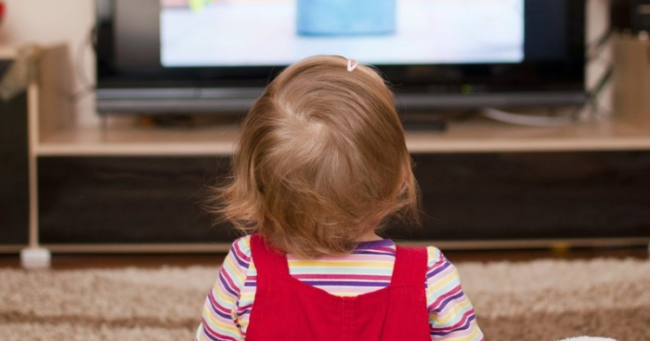In today’s world, screens are everywhere. TVs, tablets, smartphones and computers are part of everyday life for most families. But for babies, toddlers and preschoolers, too much screen time can get in the way of how they naturally learn—through play, talking and spending time with caring adults.

Limit Screen in the Early Years
The American Academy of Pediatrics (AAP) recommends no screen time at all for babies under 18 months, except for video chatting with loved ones. For older toddlers and preschoolers, screen time should be limited to about 1 hour per day of high-quality, age-appropriate programming.
Families are encouraged to turn off screens during meals, before bed and when they’re not being used. Not sure where to start? Create a Family Media Plan. It also helps to keep screens out of the bedroom.
Be a Role Model
Kids notice everything grown-ups do—including screen habits. When parents limit their own screen time, children are more likely to follow that example. Whether it’s turning off the TV or putting down a phone during playtime, these little choices show children that real-life interaction matters most.

Use Parental Controls to Keep Tech Safe
Most devices, apps and streaming services have settings that help caregivers manage what their child can see or do. These parental control tools can:
- Block inappropriate websites or videos
- Set screen time limits
- Turn off access to apps at certain times
- Filter content by age
It’s important to check these settings often and make changes as your child grows.
Choose Quality Over Quantity
Not all screen time is equal. Before letting children use an app or watch a show, adults should ask, “What will my child learn from this?” Look for media that encourages thinking, asking questions or exploring something new.
Caregivers can:
- Watch with their child and talk about what’s on the screen.
- Use technology together to connect with others, like video calls with grandparents.
- Avoid violent or fast-paced shows that can cause sleep problems or aggressive behavior. Common Sense Media can help make this easier.
Learning Happens Best Without a Screen
Research shows that young children learn language by interacting with people—not by watching screens. When caregivers talk, sing, read and play with children, it builds strong brain connections that support speaking, listening and problem solving.
Here are simple ways to help kids learn without screens:
- Read together every day. Ask questions and talk about the pictures.
- Make routines fun. Sing songs while brushing teeth or cleaning up toys.
- Play together. Use blocks, puppets or kitchen tools for pretend play.
- Narrate what’s happening. Say things like “You’re pouring the water” or “That’s a big truck.”
These small moments matter. They help children express themselves and get ready for school.

